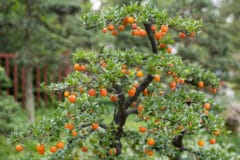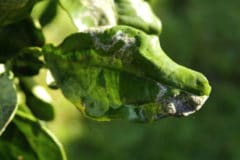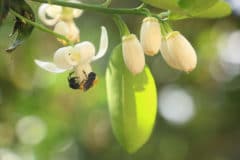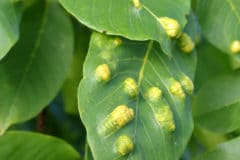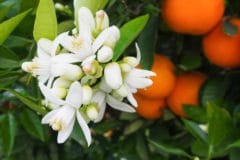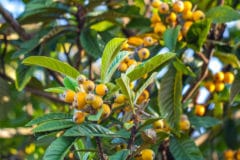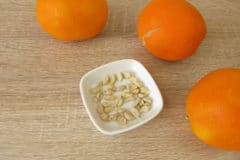Organic Fertilizing
When planting your tree, replace one-third of the soil with organic compost. Then add 1 cup (250ml) of organic, granular 5-2-6 citrus fertilizer to the compost/soil mix.
After the tree puts out 8 inches of vertical growth, feed it in late winter before it blooms, in spring after it blooms and in September to replenish the soil nutrients. Scatter the granules along the drip line at the ends of the branches and water them in. Apply the fertilizer at these rates:
- Under 3 feet tall: 6 cups (1.3 liters)
- Between 3 and 6 feet: 12 cups (2.6 liters)
- Between 6 and 9 feet: 18 cups (4 liters)
- Over 4 feet: 24 cups (5.3 liters)
Expert gardener’s tip: Fertilizing after September may reduce the quality of your oranges and stimulate frost-sensitive new growth.
Organic Frost Protection
Subtropical sweet orange trees thrive in USDA plant hardiness zones 9 through 11. But they suffer fruit loss after several hours below 28°F (-2.2°C). To prevent the problem:
- Soak your orange tree slowly and deeply out to its drip line the day before fruit-threatening cold is predicted to arrive. Wet soil absorbs more of the sun’s heat and releases it through the night. If you use mulch, remove it to expose the soil.
- Drape your tree with lightweight frost cloth from your garden supply store. Secure the base of the cloth with bricks or rocks.
These two measures will provide your tree with 9° to 10°F (5° to 5.6°C) of frost protection.
Organic Pest Control
Orange trees attract a host of soft-bodied pests, including whiteflies, aphids and spider mites. Tackle all of them with an organic insecticidal soap spray.
To make your own spray, mix 3 tablespoons (45ml) of mild, unscented soap flakes in 1 gallon (3.78 liters) of water. Spray until it drips from all the tree’s surfaces and let it work for several hours before rinsing the residue.
Expert gardener’s tip: To protect pollinating bees, don’t spray when the trees are flowering.
Snail Control
Keep snails away from your oranges with a strip of 5-mil copper foil wrapped around the trunk. Find the foil at garden or hardware supply stores. Make sure it’s at least 4 inches wide, or the pests will navigate it.



